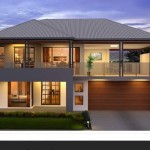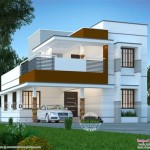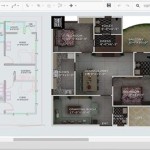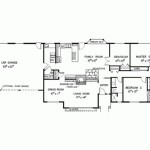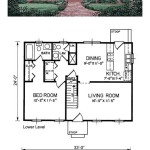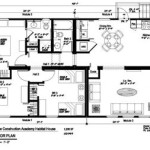House Plans With In-Law Suite And 3-Car Garage: A Comprehensive Overview
The convergence of multi-generational living and the increasing demand for vehicle storage has led to a rise in popularity of house plans incorporating an in-law suite and a 3-car garage. These plans cater to families seeking both independence and proximity, while also providing ample space for vehicles, hobbies, or storage.
This article delves into the various aspects of designing and selecting house plans that feature these elements. It will explore the considerations involved in integrating an in-law suite seamlessly into the main residence, maximizing the functionality of a 3-car garage, and navigating the design challenges associated with combining these features.
Before delving into specifics, it’s important to define what constitutes an "in-law suite." Also known as accessory dwelling units (ADUs), these spaces are self-contained living areas within a larger house, or sometimes detached from the main house. Typically, they include a bedroom, bathroom, and a living area, often with a kitchenette. A 3-car garage, as the name suggests, is a garage designed to house three vehicles. Its size allows for more flexibility than a standard two-car garage, offering space for storage, workshops, or specialized equipment.
Key Considerations for In-Law Suite Design
Integrating an in-law suite into a house plan requires careful consideration of several factors. These range from accessibility and privacy to building codes and spatial planning. The goal is to create a comfortable and independent living space for the suite's occupants while maintaining harmony within the larger household.
One of the primary considerations is accessibility. If the in-law suite is intended for elderly or mobility-impaired individuals, features such as ramps, wider doorways, and accessible bathrooms are essential. Universal design principles should be incorporated to ensure the suite is usable by individuals of all abilities. Consider zero-step entryways and grab bars in the bathroom to enhance safety and ease of use.
Privacy is another crucial aspect. The in-law suite should ideally have a separate entrance to minimize disruption to both the main residence and the suite itself. Strategically positioned windows and soundproofing measures can further enhance privacy. Careful planning of shared spaces, such as laundry facilities or outdoor areas, can help maintain a balance between independence and integration.
Building codes and zoning regulations also play a significant role. Local ordinances may dictate the size, location, and features of accessory dwelling units. Compliance with these regulations is essential to avoid legal issues and ensure the suite is a permitted and safe living space. This might involve specific requirements for fire safety, egress, and utilities.
Spatial planning is paramount. The size and layout of the in-law suite should be proportionate to the overall size of the house and the needs of its occupants. A well-designed suite will maximize usable space, provide adequate storage, and create a comfortable living environment. The placement of the suite within the house is also important. Some homeowners prefer to locate it on the ground floor for accessibility, while others may opt for a separate wing of the house to enhance privacy.
When thinking about the in-law suite’s layout, think about the kitchen space. It doesn't necessarily require a full-sized kitchen, but must have a compact area for meal preparation. A sink, a small refrigerator, a microwave, and a cooktop are essential. Sufficient counter space and storage cabinets are also important to ensure functionality. A small dining area within the suite can further enhance its independence.
Also consider the bathroom within the in-law suite. It should be designed with the needs of its occupants in mind. A walk-in shower, grab bars, and a comfort-height toilet can enhance accessibility and safety. Adequate ventilation and lighting are also important to create a comfortable and functional space.
Optimizing a 3-Car Garage for Functionality and Storage
A 3-car garage offers a significant advantage in terms of space and flexibility. However, its potential can only be fully realized through careful planning and organization. Beyond simply storing vehicles, a well-designed 3-car garage can serve as a workshop, storage area, or even a recreational space.
Efficient storage solutions are crucial. Wall-mounted shelving, overhead storage racks, and cabinets can help maximize vertical space and keep the garage organized. Clear plastic bins can be used to store seasonal items, tools, and equipment. A designated workbench area with ample lighting and power outlets can transform the garage into a functional workspace. Consider pegboards or tool racks to keep tools organized and within easy reach.
Lighting is often overlooked but is essential for safety and functionality. Adequate lighting can make it easier to work on projects, navigate the garage, and locate items. LED lighting is a cost-effective and energy-efficient option that provides bright and even illumination. Consider installing motion-sensor lights for added convenience and security.
Proper ventilation is also important, especially if the garage is used as a workshop. A ventilation system can help remove fumes, dust, and moisture, creating a healthier and more comfortable environment. Consider installing an exhaust fan or a ventilation system that draws fresh air from outside.
The garage floor is another area that deserves attention. A durable and easy-to-clean floor coating can protect the concrete from stains, cracks, and wear. Epoxy coatings are a popular choice for their durability and resistance to chemicals. Rubber mats or interlocking tiles can also provide a comfortable and slip-resistant surface.
Consider the garage door. A high-quality garage door can enhance security, energy efficiency, and curb appeal. Insulated garage doors can help regulate the temperature inside the garage, reducing energy costs. A garage door opener with a remote control can provide added convenience and security.
Wiring for the garage also requires careful consideration. More electrical outlets than standard are needed to power tools, lighting, and other equipment. Strategically placed outlets can prevent the need for extension cords and create a safer working environment. Consider adding a dedicated circuit for power-hungry tools.
Combining In-Law Suite and 3-Car Garage: Design Challenges and Solutions
Combining an in-law suite and a 3-car garage into a single house plan presents unique design challenges. The goal is to seamlessly integrate these features while maintaining aesthetic appeal, functionality, and privacy for all occupants.
One of the primary challenges is the footprint of the house. An in-law suite and a 3-car garage require a significant amount of space, which can impact the overall design and layout of the house. Careful planning is essential to ensure the house fits on the lot and meets zoning regulations. Consider a two-story design to maximize living space without expanding the footprint of the house.
Aesthetic considerations are also important. The integration of the in-law suite and the 3-car garage should be visually appealing and consistent with the overall architectural style of the house. Avoid designs that make the suite or the garage appear like an afterthought. Consider using similar materials, colors, and architectural details to create a cohesive look.
Another challenge is maintaining privacy for both the main residence and the in-law suite. Separate entrances, strategically placed windows, and soundproofing measures can help mitigate this issue. Consider creating a buffer zone between the main residence and the suite, such as a shared courtyard or garden.
Accessibility is also a key consideration, especially if the in-law suite is intended for elderly or mobility-impaired individuals. Incorporate universal design principles throughout the house, including ramps, wider doorways, and accessible bathrooms. Ensure the garage is also accessible, with a level entry and ample space for maneuvering vehicles and wheelchairs.
Consider the placement of the garage in relation to the in-law suite. If possible, position the garage so that it does not block natural light from entering the suite. A side-entry garage or a detached garage can help minimize the impact on the suite's privacy and aesthetics.
Finally, consider the cost of construction. Integrating an in-law suite and a 3-car garage can add significantly to the overall cost of building a house. Careful planning and budgeting are essential to ensure the project stays within budget. Consider prioritizing essential features and choosing cost-effective materials and finishes.
In conclusion, house plans incorporating an in-law suite and a 3-car garage offer a versatile solution for multi-generational living and vehicle storage. Careful planning, attention to detail, and a thorough understanding of building codes and zoning regulations are essential to creating a functional, comfortable, and aesthetically pleasing home.

La Famille House Plans Luxury Ranch New

Rising Trend For In Law Apartments Brick House Plans Bungalow Modular Home Floor

Flexible House Plan With In Law Suite 3067d Architectural Designs Plans

House Plans With In Law Suites Houseplans Blog Com

Southern Style House Plan With In Law Suite

Ranch House Plan With In Law Suite 89976ah Architectural Designs Plans

In Law Suite Plans Give Mom Space And Keep Yours The House Designers

Modern Farmhouse Plan With In Law Suite 70607mk Architectural Designs House Plans

Pinecone Trail House Plan One Story

Country House Plan With 4 Bedrooms And 3 5 Baths 4427
Related Posts

